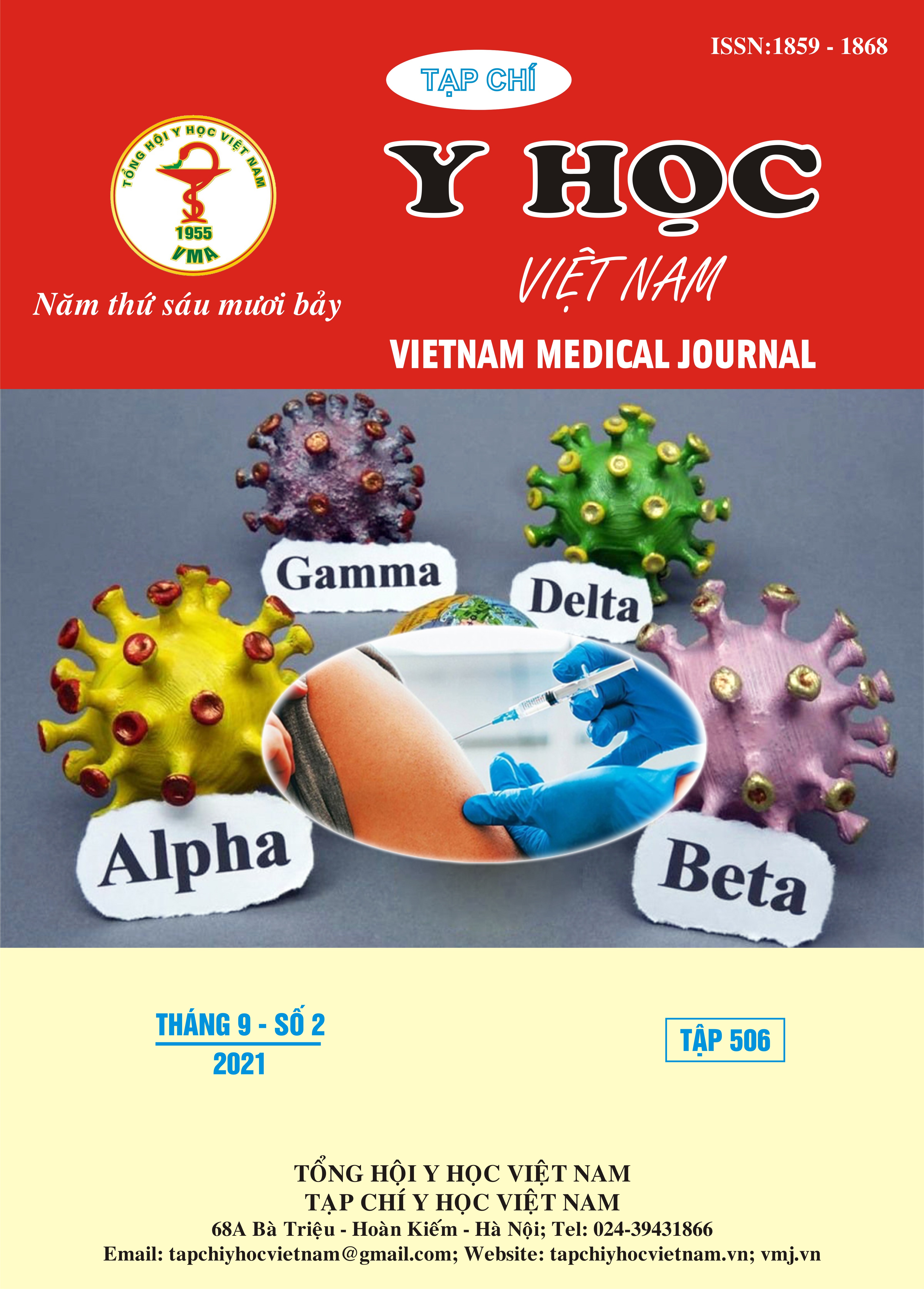CATHETER ASSOCIATEDVASCULAR ACCESS INFECTIONS STATUS IN ACUTE HEMODIALYSIS PATIENTS AND SOME RELATED FACTORS
Main Article Content
Abstract
Catheter vascular access infections are serious complication anda significant cause of morbidity and mortality for HD patients. The aims of thestudy were to evaluate catheter – related infections and to indentify some factors related increase the catheter – related infectionsin acute hemodialysis patients. Subjects and methods: Described 52 cases at high risk of catheter – related infections in Bach Mai hospital from March 2019 to March 2021. Results: The meanage: 46,85 ± 20,15 years (16-85years), The ratio of males to females is 2,25:1. Group with fever sign is 82,7%,group with non-fever sign 17,3%. The most common site of infection is the right femoral venous catheter.The most common manifestation is drainage from the exit site. The most frequent pathogens identified were S. aureus. The rate of catheter – related bloodstream infections are28/38 (75,7%). For male sex and season to outureteral stent were significant risk factors for thedevelopment of catheter – related infections. Conclusions: The rate of Catheter-related bloodstream infections accounted for 75.7%, mostly is S. aureus. Catheter-related infections in HD patients can occur at any age, and are more common in males. The rate of Catheter-related infections accounted for 75.7%, mostly is S. aureus. For male sex and season to outureteral stent were significant risk factors for thedevelopment of catheter – related infections. Patients should be instructed catheter cleaning and monitoring in the dialysis care process.
Article Details
Keywords
catheter related infections, hemodialysis
References
2. Maki DG, Kluger DM, Crnich CJ. The risk of bloodstream infection in adults with different intravascular devices: a systematic review of 200 published prospective studies. Mayo Clin Proc. 2006;81(9):1159-1171. doi:10.4065/81.9.1159
3. Su Văn Na Mê Thy Phan Khăm. Đánh giá hiệu quả của một số đường dẫn máu ra ngoài cơ thể để lọc máu. Luận văn tiến sỹ, Trường Đại Học Y Hà Nội. 2001:1-27, 66, 70
4. Lê Ngọc Hà, Đỗ Gia Tuyển, Khảo sát tình trạng nhiễm trùng liên quan đến đường vào mạch máu tạm thời trong lọc máu cấp cứu ở bệnh nhân suy thận giai đoạn cuối Luận văn thạc sỹ, Trường Đại Học Y Hà Nội. 2015
5. WeydeW, W., KlingerM,Morawsleaz, Prolouged use of the femoral catheter as a temporary access for hemodialysis. Przegleki 54, 1997
6. CanaudBernard, Haemodialysis catheter-related infection: time for actions. Nephrol Dial Transplantation, 1994.
7. Helen Caivet MD, T.T., Yoshikawa MD, Infections in diabetes. 2001: p. 407-418.


